Agenda
Conference Schedule
Day 1 full schedule
May 25, 2023 @ 11:00 - 19:20

Davide Forcellini
University of AucklandUniversity of Auckland
New Zealand
ABSTRACT
Climate change is modifying scientific attitudes toward pre- and post-event assessments of natural hazards. Unprecedented levels of destruction need renewed focus on addressing and protecting communities forcing the decision makers to change their attention to vulnerability and risk assessment. In particular, society and economy rely heavily on infrastructures, as fundamental links for movement of goods and people, and are extremely vulnerable to multiple hazards (such as droughts, floods, storms, and coastal hazards).

Sanjay Borkar
CEO, FarmERPFarmERP
India
ABSTRACT
Agricultural practices could survive delivering outward blows to the climate, but now that years of poor management has caught up, farming is struggling to bear the brunt of climate change and wrath it brings in the form of unprecedented pest attacks, scorching temperatures, inundating rains – all irregular and each as devastating as the last. Having these issues highlighted to an extent where it is impossible to ignore, coupled with the realization that climate change and its effects are very real, there has been increased and urgent efforts to innovate solutions that help mitigate these risks. The brainchild of these efforts emerged as Climate Smart Agriculture (CSA), with the aim of tackling current and future challenges based on 3 pillars, namely – increasing productivity and sustainability, enhancing resilience and adaptation, and reducing greenhouse gas emissions.
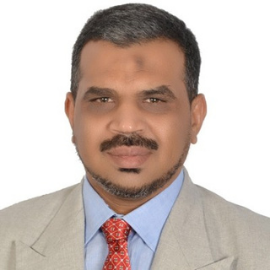
Rifaat Abdalla
Sultan Qaboos UniversityDepartment of Earth Sciences, College of Science, Sultan Qaboos University
Oman
ABSTRACT
The remote sensing applications that show the successful implementation of artificial intelligence techniques are intelligent onboard processing, advanced database examination, and the automated analysis of multispectral imagery. AI methods can represent knowledge and develop control structures for organizing such expertise in complex studies of airborne remotely sensed images.

Joe Ghossein
University of BalamandUniversity of Balamand, Koura, Lebanon
Lebanon
ABSTRACT
The focus of this paper is to outline a novel sand-based system capable of tackling global freshwater shortages considered one of the main global issues of our time. The design entitled Purifico System aims at boosting desalination plants’ freshwater production and decreasing operational costs using a scalable system that is adaptable to various needs and environments.
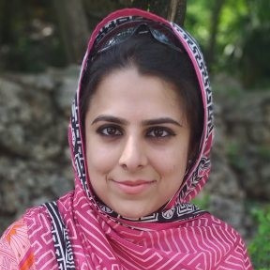
Fiza Faizi
Punjab UniversityUniversity of the Punjab
Pakistan
ABSTRACT
The synoptic perspective of satellite borne remote sensors can prove to be of great value in the fields of waste management and remediation which require cost effective and timely information from space monitoring techniques. At present, there exists a gap in literature regarding monitoring and assessment of municipal solid waste (MSW) landfill sites using image processing techniques on satellite data.
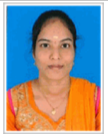
E. Hemavathy
Bharathi Women’s College , Chennai, IndiaBharathi Women’s College
India
ABSTRACT
Sustainable Fossil Energy production for Mitigating of land Subsidence and Climate Change: Case study of the Niger Delta, Nigeria

Fidelis Abija
Rivers State UniversityInstitute of Geosciences and Space Technology, Rivers State University, Port Harcourt, Nigeria
Nigeria
ABSTRACT
Production of Fossil fuels for driving industrialization is fraught with several environmental challenges such s ground subsidence, waste water effluent discharges, greenhouse gas emissions and gas flaring. Carbon, a major bye product in fossil fuel consumption is one of the major culprits in ozone layer depletion and temperature inversion in the stratosphere thereby heat up the earth and exacerbating climate change.

Sivakumaran Sivaramanan
Environmental officerCentral Environmental Authority
Sri Lanka
ABSTRACT
Regenerative developmental design has more potential than sustainable design due to its adaptability and elevated resilience. Globally, regenerative solutions are now being practiced in many regions such as agroforestry, emission free transportation, introducing village and aboriginal alternatives for single use plastics, clean energy replacements and coal and fossil fuel ban, etc. However, developing countries lie way behind such as China’s Eco village development programme and Mission Green India, which are solely based on sustainable development principles and very little of such solutions have the capacity to go beyond it. Most of the present day environmental problems are in a ‘succession’ for instance, in early 1950s, Dayak people suffered from malaria. WHO had permitted to spray huge amount of DDT to kill mosquitoes. The attempt was a success and vector borne disease malaria was mitigated, however, their houses began to fall down on their heads. This is because application of DDT also killed the parasitic wasp that had previously controlled thatch eating caterpillars. In this scenario the worst event is DDT poisoned insects were eaten by geckos, which were eaten by cats, the cats died and the rat population increased. The people were affected by sylvatic plague and typhus. To find solution to this WHO was obliged to parachute 14,000 live cats into Borneo (Wahl, 2016). Similarly, banning of larger particles in the emission by the US EPA leads to acid deposition, and subsequent banning of smaller (SOx) particles also lead to increased global warming (due to absence of radiation scattering cloud that are usually found in smaller particles). Unlike regenerative solution present sustainable solutions cannot adapt, for instance a solution given for climate change now is much different from the solution we gave to the same crisis five decades ago. Thus, autocorrecting, co-evolving regenerative cultures are immortal and holistic indeed.
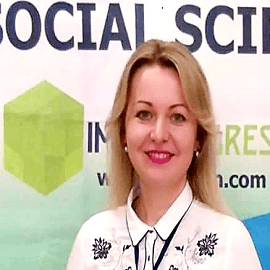
Lyudmyla Symochko
Associate ProfessorUzhhorod National University, Ukraine
Ukraine
ABSTRACT
Climate change is a threat to the Carpathian Mountains. Over the past decades, summer temperatures have increased by as much as 2,4°C in some parts of the Carpathians with an increase in the frequency and intensity of heat waves. Climate has one of the greatest effects on soil microbial activities. Forests are expected to face significant pressures in the future from climate change.

Rajnish Prasad Rajesh
Research ScholarKrishi Vigyan Kendra
India
ABSTRACT
In terms of food security and sustainability Climate change is a matter of great concern in today’s scenario. This study has been conducted for Ranchi, Jharkhand using DSSAT model under the projected climate change to assess the climate change effects on days to anthesis, physiological maturity and yield of K9107, HUW468 and Birsa Genhu 3, varieties of wheat. To evaluate the impact on the selected varieties of wheat ECHAM 5 GCM had been used for years 2030, 2040 and 2050. The simulated results of ECHAM 5 showed that during wheat growing season maximum and minimum temperature will be increased in the upcoming decades. The minimum temperature would increase more than the maximum temperature. The results under GCM showed that days to anthesis and growing period would shrink as compared to current situation. ECHAM 5 model predicted that during 2050 there will be reduction in days to maturity of 14, 8 and 9 for K9107, HUW468 and Birsa Genhu 3 respectively and yield reduction of wheat variety HUW 468 would be maximum by 43% followed by K9107 and Birsa Genhu 3 by 27% and 24% respectively. It is to perceive that the shifting of sowing date beyond normal date of sowing would lead to reduction in yield as delay in sowing will provide lesser crop duration and higher temperature resulting into poor growth and development. Above normal temperature during the flowering stage of crop is likely to cause pollen sterility resulting in the yield reduction if sowing is delayed beyond normal date of sowing. This shows that the climate change would have negative impact on the yield of wheat crop in coming decades.

Eddiwan Kamaruddin
Research ScholarRiau University
Indonesia
ABSTRACT
The Indonesian government's policy towards natural peat swamp forests that are converted in Indonesia can actually change the chemical nature of the soil. In this study, we want to study the changes in the chemical properties of peat swamp soil in Riau that occur after the land conversion from peat swamp forest to oil palm plantations, HTI Acacia crasicarpa, sago plantations and find out what types of plants are sustainable for the peat swamp land. From the results of this study, it was found that soil pH increased after land conversion was carried out. Meanwhile, the water level has decreased. Chemical properties such as C-organic, ash content, CEC, base saturation, macronutrients (NPK) and exchangeable bases also changed after undergoing landuse changes. However, judging from the aspect of the Indonesian government regulations (PP. No. 25 of 2000 on criteria for peat damage and Government Regulation No. 150 of 2000 on controlling soil damage for biomass production) this is not a violation. Sago plant species turned out to be the most sustainable plant compared to other plant species because this plant is able to adapt to changes in soil chemical properties, and vice versa for other plants, even though they are planted for a long time.
Advanced Optical and Chemical Characterizations of Sri Lankan Roof Tile Clays for more over Industrial Uses

Suresh Aluvihara
University of PeradeniyaUniversity of Peradeniya
Sri Lanka
ABSTRACT
Roof tile industry is an abundant industry in different areas of Sri Lanka because of the availability of different clay verities at large number of specific locations in Sri Lanka. In the comparison of the modern uses of such clays, it is highly limited the advanced applications of such clays for advanced science and technological uses other than the primary uses such as the pottery industry, brick industry or roof tile industry. The advanced chemical analysis and identifications of the important chemical characters of a selected roof tile clay type were the aims and objectives of the existing research. The representative clay samples were collected from Dankotuwa area which is recognized as an abundant area of finer grained clays that much suitable for roof tile industry. The collected clay samples were chemically analyzed using X-ray diffraction (XRD) spectrometer, X-ray fluorescence (XRF) spectrometer, Fourier transform infrared (FT-IR) spectrometer and Scanning Electron Microscope (SEM). The obtained results showed the presence of Fe, Zr, Ba, Ti and K as the major elements, kaolinite, quartz, glauconite, muscovite and marcasite as the minerals. In the considerations of advanced characteristics of such minerals, kaolinite, glauconite and marcasite have been identified as strong adsorbents for some specific compounds such as some heavy metals, radioactive elements and pathogens and some of ferrous minerals may have the supporting capacities in the catalytic activities for some chemical reactions that combining with some specific solid compounds such as activated carbon. Therefore, as the suggestions, it is possible to recommend the developments and enhancements for such clays for the uses in the waste water treatment applications and catalytic activities as a supporting material in various forms such as the bulks, composite materials or nano-materials.
Day 2 full schedule
May 26, 2023 @ 10:00 - 13:00

Gundlapalli Swathi
Ph. D ScholarAssam Agricultural university
India
ABSTRACT
Climate change refers to any change in weather parameters over a long period of time, whether due to natural variability or human activities. This has brought about an expansion in normal temperature by 1.1 and 6.4 °C by 2090-99 contrasted with that during 1980-90. An increase in the concentration of GHGs viz., CO2, CH4 and N2O in the atmosphere will result in an excessive trapping of re-radiated infrared radiations leading to “global warming”. These changes will cause significant modifications in soil properties and they act as potential threat to food security. Climate change has impact on soil health through its effect on soil properties and processes. It impacts on soil properties like aggregate stability and soil organic matter. Reducing the emissions from agricultural activities and increasing soil carbon storage through carbon sequestration are two ways for GHG mitigation.
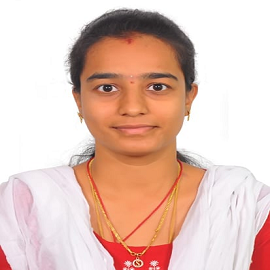
Yellagandula Mani
P.hD ScholarBirsa Agricultural University
India
ABSTRACT
Indian agriculture is heavily dependent on monsoons. About 61% of farmers in India rely on rain-fed agriculture. Around 58% of cultivated area is under rainfed condition which contributes to 40% of food production in country. The annual and seasonal rainfall received, and its variability directly influences the success or failure of crops. Keeping these facts in view the present study was undertaken with a view to plan the crop based on rainfall characteristics for Bokaro district of Jharkhand. Daily rainfall data for 30 years (1989 - 2018) of 9 blocks collected from the DAO Bokaro were analysed for weekly, monthly, seasonal and annual distribution, Meteorological and agricultural drought were made using software (Weather Cock v1.0) developed by coordinating unit of AICRP on Agrometeorology CRIDA, Hyderabad. Decreasing trend of rainfall was recorded in most of the blocks between -0.958 to -14.54 mm/yr. Among seasons, monsoon received maximum rainfall (85-88%) and only 12-15 % rain was received in remaining three seasons (Post monsoon, Winter & Summer). Rainfall variability in terms of CV% was notice maximum in rabi season (118.4 to 157.8 %) than that of kharif (23.3 to38.7 %). Severity of meteorological drought was analyzed and one severe meteorological drought in last 30 years. Rice is best suitable crop in medium and lowlands during kharif and pulses like black gram, green gram, soybean, horse gram, oil seeds like sesame, mustard etc can be taken up during rabi season. Sweet potato is also added in crop plan because it is under cultivation by most of farmers. Indian agriculture is heavily dependent on monsoons. About 61% of farmers in India rely on rain-fed agriculture. Around 58% of cultivated area is under rainfed condition which contributes to 40% of food production in country. The annual and seasonal rainfall received, and its variability directly influences the success or failure of crops. Keeping these facts in view the present study was undertaken with a view to plan the crop based on rainfall characteristics for Bokaro district of Jharkhand. Daily rainfall data for 30 years (1989 - 2018) of 9 blocks collected from the DAO Bokaro were analysed for weekly, monthly, seasonal and annual distribution, Meteorological and agricultural drought were made using software (Weather Cock v1.0) developed by coordinating unit of AICRP on Agrometeorology CRIDA, Hyderabad. Decreasing trend of rainfall was recorded in most of the blocks between -0.958 to -14.54 mm/yr. Among seasons, monsoon received maximum rainfall (85-88%) and only 12-15 % rain was received in remaining three seasons (Post monsoon, Winter & Summer). Rainfall variability in terms of CV% was notice maximum in rabi season (118.4 to 157.8 %) than that of kharif (23.3 to38.7 %). Severity of meteorological drought was analyzed and one severe meteorological drought in last 30 years. Rice is best suitable crop in medium and lowlands during kharif and pulses like black gram, green gram, soybean, horse gram, oil seeds like sesame, mustard etc can be taken up during rabi season. Sweet potato is also added in crop plan because it is under cultivation by most of farmers.
Managing Water, Soil and Waste in the Context ANAGING WATER, SOIL AND WASTE IN THE CONTEXT OF GLOBAL CLIMATE CHANGE

Surya Teja Varanasi
Research ScholarAssam Agricultural university
India
ABSTRACT
Soil is indeed a critical component of the earth. It is a mat for numerous ecologically important functions and offers diversified ecosystem services that are essential terrestrial ecosystems and to maintain biological diversity and productivity. Improving soil quality by adopting various recommended management practices will lead to carbon sequestration, reduce emissions arising due to numerous anthropogenic activities, improve the quality of environment, and enhance and sustain agronomic productivity. Actively managing Soil, Water, Waste and Climate Change is the double edged razor in this fast developing 21st century due to improper balance among the Soil-Plant-Air-Continuum (SPAC). It is not always that climate influences the soil but also soil influences the climate. Though we have earth full of water, we are only left with very few percent of it for agricultural and drinking purposes. It has been reported that there is gradual decline in the soil moisture year by year which increases the need for irrigation. Also potential decrease in the soil moisture will lead to desertification of the lands in the near future. Converting the waste to nutrient rich compost helps in safe sewage and sludge disposal and also maintains the quality of the water bodies. Soil, water and waste concomitantly influence the climate that again influences the soil and water. The management of soil is not only for minimizing the greenhouse effect but also to maintain the soil health and quality.
Communicating on Environmental Crisis and Natural Resources: Critical Views about Development and Planetary future

Priti Sriranjan
LecturerSCS College Puri
India
ABSTRACT
Fast depleting natural resources, global warming, and consequent climatic changes, pose a serious threat to the very existence of life in our planet. Being a public concern the problem, for its solution, demands active public participation. It is here that media, by mobilizing people against rampant exploitation of nature, plays a crucial role. Past researchers have analyzed the role of media in this direction. The present paper cites studies that depict the role of media in creating public awareness for adopting practices aimed at sustainable use of natural resources and development and post-development. It also discusses the challenges faced by media in its attempts to communicate nature to a mass audience. The paper also discusses the status of environmental degradation and sustainable solidarities in global south societies to pinning and underpinning questions about planetary crisis and future challenges from an Indian context. Their conditions have remained virtually unchanged over centuries in spite of several government initiated programmes and schemes. Access to or utilization of opportunities for upward mobility is very low. This is the reason why serious thought needs to be given to the impact of development on marginalized communities. In response to growing pressures on landscapes and livelihoods, people are moving, communities are adapting. We debate the numbers, the definitions and the modalities – and the tension between the need for research and the need to act. Further my paper also debates on the development issue and also a phenomenon devastating the lives of millions every year. Not just individuals but communities with very rich natural resources, cultural heritage and integrity are confronted by loss of cultural identity through projects that are planned and executed by the state. This element of knowledge and choice accepts and permits of environment and ‘justice risk’ (A theory of Samarendra Das during Zambian protest comparing global context with local experiences about Shah Commission Report) with formidable consequences.

Wafik Noseir
Environmental Engineering ConsultantEgyptian Modern Center
Egypt
ABSTRACT
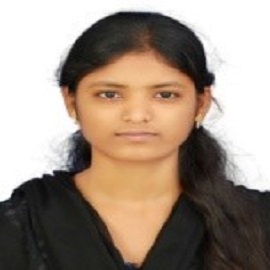
Jeevitha P
Research ScholarAssam Agricultural University
India
ABSTRACT
Locust infestations have recently ravaged agricultural and natural vegetation throughout the world, causing tremendous damage and jeopardizing food security. Desert locust outbreaks and swarms migrate over the Arabian Peninsula, East Africa, India, and Pakistan due to unusually significant rainfall in desert locust (Schistocerca gregaria) habitats and lack of surveillance. At the same time, despite extensive and continuing monitoring and control measures, swarms of the Moroccan locust (Dociostaurus maroccanus) in various Central Asian nations and swarms of the Italian locust (Calliptamus italicus) in Russia and China damaged crops. Despite technical advancements in locust monitoring, forecast, and management measures, these recent incidents highlight that the risk and devastation caused by locust pests is as prevalent as ever, affecting 100 million human lives. Since the 1980s, remote sensing data and applications have accompanied numerous locust management actions, resulting in better and more successful locust outbreak and plague control. Recent advances in cloud computing, as well as open-access remote sensing data archives, have created new opportunities for locust control and study using remote sensing. Unmanned aerial vehicle (UAV) technologies also provide new possibilities for locust management which is both more effective and quicker. Hence, a review paper combines a thorough and quantitative summary of international research publications concentrating on locust control and study utilizing remote sensing. The findings suggest a significant focus on three species and their respective locations of interest: the desert locust, the migratory locust (Locusta migratoria), and the Australian plague locust (Chortoicetes terminifera). Most studies used data from the Advanced Very High-Resolution Radiometer (AVHRR), Moderate-Resolution Imaging Spectroradiometer (MODIS), and Landsat for vegetation monitoring and land cover mapping. Despite significant progress and utilization of current remote sensing resources, numerous gaps and areas for future study is been highlighted to increase our understanding and capacity of remote sensing in locust epidemic research and control.



